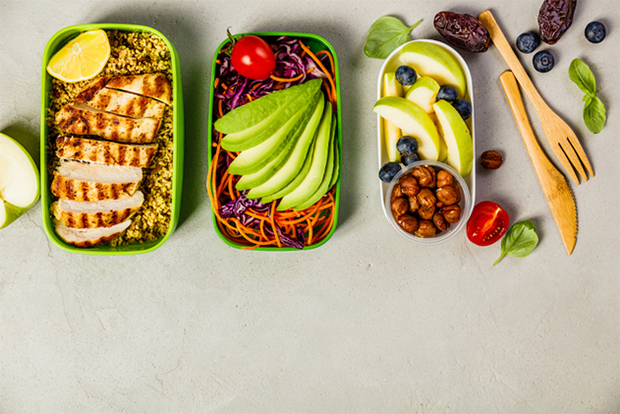
Eating healthy is often perceived as expensive, but it’s possible to maintain a nutritious diet without breaking the bank. By planning ahead, making smart grocery choices, and being mindful of meal preparation, you can nourish your body while staying within your budget. Here are some tips for making healthy eating choices on a budget:
1. Plan Your Meals
Meal planning is one of the most effective ways to save money while eating healthy. By planning your meals for the week, you can avoid impulse purchases and ensure that you have all the ingredients you need to prepare balanced meals. Start by making a list of the meals you want to prepare, and include simple, whole foods like grains, vegetables, and lean proteins. When you plan, you’re also less likely to waste food since you’ll buy only what’s necessary.
Creating a shopping list based on your meal plan is key. Stick to this list when you’re in the store to avoid purchasing extra items that may not be necessary.
2. Buy In Bulk
Buying items in bulk can be a great way to save money. Whole grains, beans, lentils, oats, and quinoa are some examples of bulk foods that are not only nutritious but also cost-effective. They can be used in a variety of meals and are a source of fiber and protein, which help keep you full longer.
Buying frozen fruits and vegetables in bulk can also be a smart choice. Frozen produce is often less expensive than fresh options, especially when it’s out of season, and it doesn’t spoil as quickly, reducing waste.
3. Shop Seasonally
Seasonal produce is typically cheaper and fresher than off-season items. Take advantage of the lower prices during peak harvest times. For example, in the summer months, fruits like berries, tomatoes, and peaches are often at their best and most affordable. During the fall and winter, root vegetables like sweet potatoes, carrots, and squash tend to be abundant and less expensive.
To make the most of seasonal produce, you can freeze or preserve extra fruits and vegetables to use later in the year.
4. Cook At Home
Eating out can be expensive, and it’s often harder to control the nutritional content of your meals. Cooking at home allows you to create healthy dishes while controlling the ingredients and portion sizes. Preparing your meals from scratch is not only budget-friendly, but it also gives you the opportunity to use healthier, whole foods and avoid excess sodium, sugar, and unhealthy fats that are often found in restaurant meals.
If you’re short on time, try batch cooking. Cook large portions of meals like soups, stews, or casseroles, and freeze individual servings. This will help you avoid relying on takeout or processed meals during busy days.
5. Use Affordable Protein Sources
Protein can be one of the most expensive items on your grocery list, but there are plenty of budget-friendly options. Canned beans, lentils, chickpeas, and eggs are excellent protein sources that are affordable and versatile. Plant-based proteins like beans and lentils are not only cheaper than animal protein but also high in fiber, which can keep you feeling satisfied longer.
If you prefer animal-based protein, consider buying cheaper cuts of meat like chicken thighs, ground turkey, or pork. These cuts are just as nutritious as more expensive options and can be used in a variety of recipes.
6. Avoid Processed Foods
Processed and pre-packaged foods tend to be more expensive and less nutritious than whole foods. While they may be convenient, many processed foods are high in unhealthy fats, sugars, and sodium, which can be detrimental to your health in the long run.
Instead of purchasing pre-made frozen meals, snacks, and sugary drinks, opt for simple, whole ingredients. Prepare your own snacks like homemade trail mix with nuts and dried fruit, or bake healthy snacks like granola bars using oats and honey.
7. Take Advantage Of Coupons And Discounts
Many grocery stores offer discounts, coupons, or loyalty programs that can help you save money. Keep an eye on weekly flyers or digital promotions, especially for healthier products like whole grains, fresh produce, and dairy. Signing up for store loyalty programs can also help you receive additional savings or rewards for your purchases.
8. Grow Your Own Food
If you have the space and time, growing your own herbs, vegetables, and fruits can be a fun and cost-effective way to incorporate more fresh produce into your diet. Even if you don’t have a garden, growing herbs like basil, parsley, or mint in small pots on a windowsill can add flavor to your meals and save money on store-bought options.
Conclusion
Making healthy eating choices on a budget is entirely possible with some planning and strategic shopping. By focusing on whole, seasonal foods, buying in bulk, cooking at home, and using affordable protein sources, you can enjoy a nutritious diet without overspending. With a little effort and creativity, eating well can become a sustainable and budget-friendly part of your lifestyle.
Browse these resources for similar content:
https://thewestaustralia.com.au/
https://thebrisbanetimes.com.au/
https://republicworld.com.au/
https://perthpost.com.au/
https://nswlive.com.au/
https://melbournejurnal.com.au/
https://perthstar.com.au/
https://news18.com.au/
https://mashable.com.au/
https://the-sun.com.au/
https://business-standard.com.au/
https://wionews.com.au/
https://thequint.com.au/
https://financialexpress.com.au/
https://theglobeandmail.com.au/
https://forbes-australia.com.au/
https://mensjournal.com.au/
https://homecrux.com.au/
https://allhomeliving.com.au/
https://goodhousekeeping.com.au/
https://homedit.com.au/
https://thehealthsite.com.au/
https://healthkart.com.au/
https://nerdfitness.com.au/
https://wellnessmama.com.au/
https://naturalnews.com.au/
https://taycanarcade.com.au/
https://ebusinessname.com.au/
https://ebusinessnames.com.au/

